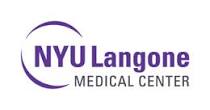Home Based Adaptive Arm Training for Children
| Status: | Recruiting |
|---|---|
| Conditions: | Neurology |
| Therapuetic Areas: | Neurology |
| Healthy: | No |
| Age Range: | 5 - 17 |
| Updated: | 1/30/2019 |
| Start Date: | January 2017 |
| End Date: | March 2019 |
| Contact: | Zena Moore |
| Email: | zena.moore@nyumc.org |
Home Based Adaptive Arm Training for Children With Hemiplegia
Twenty pediatric patients aged 5-17 years with Acquired Brain Injuries (ABI) will be
randomized to receive either a bimanual-to-unimanual device home training program (10
subjects) or a conventional non-device home training program (10 subjects) for a period of 6
weeks.
The specific aims of this proposal are to:
Aim 1: Introduce home-based targeted upper limb training in children with hemiplegia from ABI
(Acquired Brain Injuries) using a bimanual-to-unimanual training approach It is hypothesized
that child-friendly home-based upper limb bimanual-to-unimanual training will lead to greater
compliance and improved motor outcome on the Fugl Myer Scale compared to a conventional home
training program.
Aim 2: Improve the understanding of the pattern of recovery of isolated joint movements in
the pediatric population with hemiplegia following ABI.
It is hypothesized that individuals receiving device-based bimanual-to-unimanual training
will show improvement in active range of motion across upper limb joints compared with a
conventional home training program.
randomized to receive either a bimanual-to-unimanual device home training program (10
subjects) or a conventional non-device home training program (10 subjects) for a period of 6
weeks.
The specific aims of this proposal are to:
Aim 1: Introduce home-based targeted upper limb training in children with hemiplegia from ABI
(Acquired Brain Injuries) using a bimanual-to-unimanual training approach It is hypothesized
that child-friendly home-based upper limb bimanual-to-unimanual training will lead to greater
compliance and improved motor outcome on the Fugl Myer Scale compared to a conventional home
training program.
Aim 2: Improve the understanding of the pattern of recovery of isolated joint movements in
the pediatric population with hemiplegia following ABI.
It is hypothesized that individuals receiving device-based bimanual-to-unimanual training
will show improvement in active range of motion across upper limb joints compared with a
conventional home training program.
Inclusion Criteria:
- Acquired Brain Injury at least 3 months prior to enrollment.
- Unilateral hemiparesis
- History of compliance with home exercise programs in the past.
Exclusion Criteria:
- Any social or medical problem that precludes compliance with the protocol
- Comorbid seizure disorder or other neurological disease
- Treatment with botulinum toxin or intrathecal baclofen in the 3 months preceding
enrollment
- Implanted neuromodulatory or electronic device or other complicating illness
- Lack of capacity to consent
We found this trial at
1
site
550 1st Ave
New York, New York 10016
New York, New York 10016
(212) 263-7300

Principal Investigator: Renat Sukhov, MD
New York University Langone Medical Center NYU NYU Langone Medical Center, a world-class, patient-centered, integrated,...
Click here to add this to my saved trials